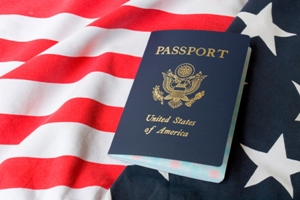 Green Card allows non-U.S. citizens to live permanently in the United States with many rights and responsibilities, including the legal right to work and study in the United States. Students from other countries have the right to obtain a Lawful permanent resident “LPR” card via some routes.
Green Card allows non-U.S. citizens to live permanently in the United States with many rights and responsibilities, including the legal right to work and study in the United States. Students from other countries have the right to obtain a Lawful permanent resident “LPR” card via some routes.
Realistically, the path to obtaining legal permanent residence (green card) varies for each individual (and, in most cases, can be rather long). To improve your chance of success, you should strive to gain and master specialized skills in a field with positive job outlook and significant industry growth.
Students go to the United States for studying with the F-1 student visa, that is categorized as a non-immigrant visa, because it gives you the right to live in the U.S. temporarily during the time you are studying, but is not intended for people who want to live permanently in the U.S. In general it is not possible to obtain a green card (permanent resident) directly through a student visa. However some students, upon graduation, apply for a job and obtain an H1B work visa or another type of what is called a “dual status” visa, and then after obtaining their H1B work visa or another dual status visa, apply for a Green Card through their employer. The most common way for international students to obtain green cards is through sponsorship by an employer upon graduation from university and sufficient work experience. Usually, a company will first hire someone on an H-1B non-immigrant visa and see how well they work and fit in with the company culture and so on, before offering to sponsor them for a green card. Because it is both expensive and time-consuming for any employer to sponsor a foreigner for employment, you need to either have a good personal relationship with the potential employer, bring with you a significant value-add/skill set, or both.
The most realistic way for an international student to obtain a green card is to position yourself so that you are readily qualified for H-1B visa sponsorship. H-1B visas are for professional workers in specialty occupations that require at least a Bachelor’s degree or higher as a minimum barrier to entry in the job market. The number of H-1B visas available is based on a quota system, capped at 65,000 per fiscal year. Also, USCIS has become increasingly strict in approving H-1B petitions in many fields, especially those that are not STEM related.
At the end of the day, there is no bright line rule for how exactly to go about in obtaining a H1-B visa or U.S. green card based on employment/skill set, but a good way to look at a proper strategy is to ask yourself, “What can I study, what skills can I learn, what goals can I accomplish that will position me to be in high demand by employers?” When you consider the above, you can see why for some people, obtaining a Master’s degree, attending a top university, and majoring in a field with high demand for employees such as computer programming or engineering is not a bad idea.
To get more detailed information about green card application process, please visit http://www.usimmigrationapplication.org/green-card for step by step instructions on how to apply for a green card, including instructions to access and file permanent residence application forms.







